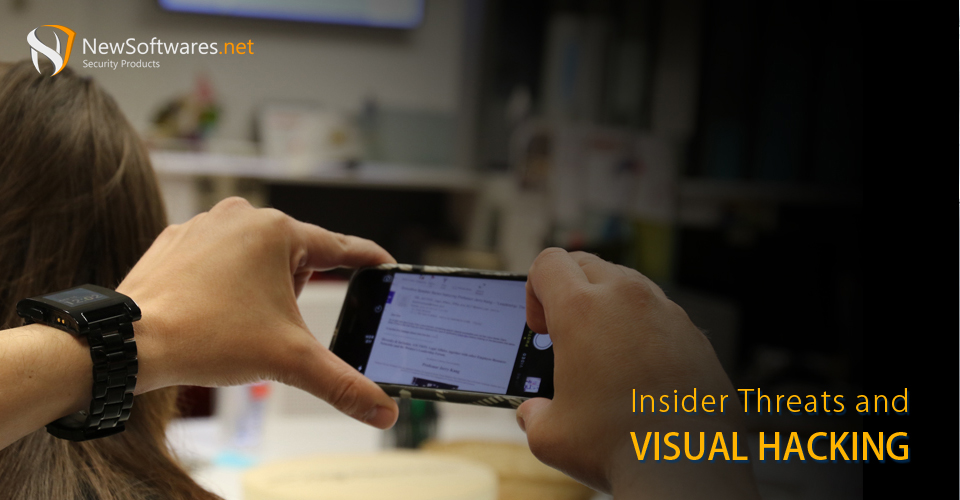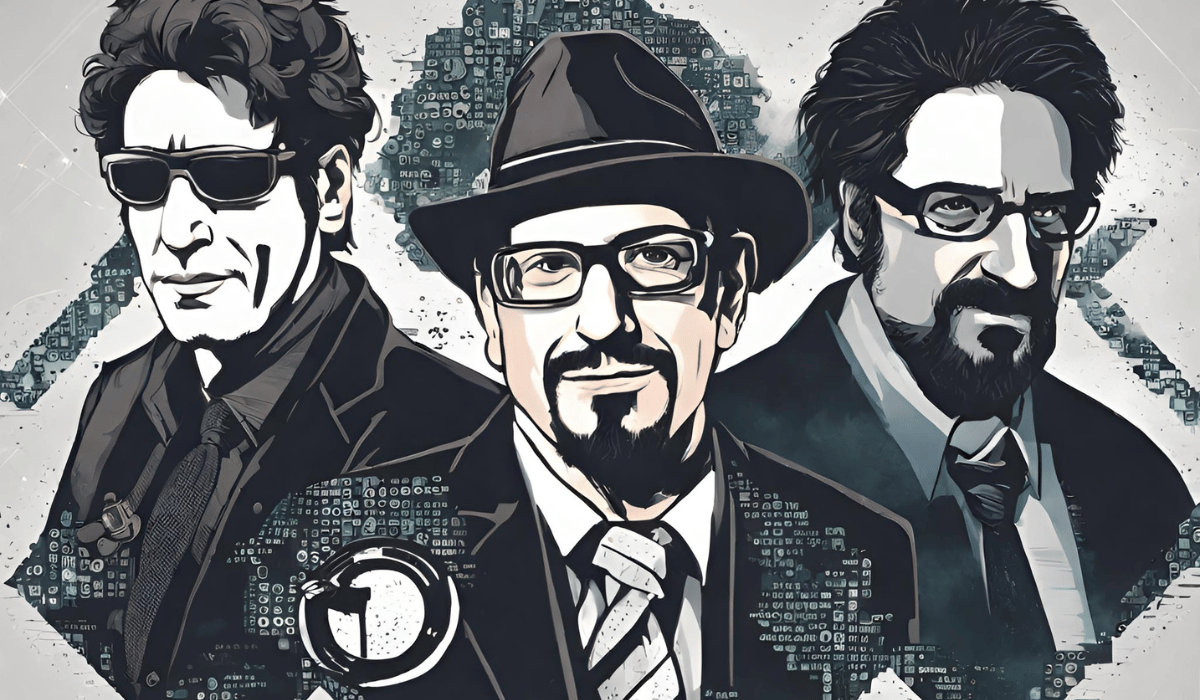When we think about hacking, we have this preconceived notion that someone far away is trying to access another person’s computer or server in the comfort of their own home. Simply by entering a few sophisticated hacking commands, the hacker is able to extract the required information from their victims – as seen in the movies. Although this type of hacking can be counteracted by using encryption tools such as Folder Lock, there’s another – more sinister type of hacking – called visual hacking which is always overlooked. A study conducted by the Ponemon institute found that nearly 88 percent of so called ‘white hat hackers’ attempting to visually hack information were – by and large – quite successful.

The study was conducted in eight U.S based firms, in which employees volunteered to steal information visually, such as a password or other sensitive access codes. Employees were instructed to steal information using three different techniques; the first technique involved roaming around the office, looking for confidential information available in plain view. The second technique involved simply picking up and walking away with sensitive documents which were easily accessible. The third method involved taking images of perceptive information with a smartphone camera.
What’s surprising is that these activities were all conducted in plain view, and only 30 percent of time the culprit was stopped or caught by other employees. Keeping these facts in mind, it’s shockingly disturbing how easy it can be to steal information from a company. In addition to this, the following detailed stats related to the study were also recorded:
Speed: Nearly 45 percent of visual hacks took place in less than 14 minutes, while the remaining 63 percent took less than 30 minutes.
Amount of information stolen: Visual hackers, on average, were able to steal 5 pieces of sensitive information. Out of those 5 documents, 63% were related to HR data. 42% was related to customer lists and information, and lastly 37% were related to sensitive passwords and access codes.
Venerable mediums: Nearly 53% of receptive information was stolen through visually observing computer monitors. While 29% was stolen from vacant desks, trash bins and copy machines.
In all, the study revealed how simple it is to steal information in an office setting. The study highlighted a whole new side to ‘insider threats’. It was also found that offices which have an open plan floor design were much more susceptible, as suppose to other office plan types. Thus, contractors or visitors with the intention to steal could easily get away classified documents without much effort.
Moving on, looking at different departments within a company, it was found that the customer services department was most at risk, while finance/accounts department were the most challenging departments from where information could be stolen.
The good news is that visual hacking can easily be prevented through employee training. HR departments need to setup a good training system for existing and new employees in which they can train them on how to prevent visual theft. With appropriate training and visual deterrents (such security cameras) companies can keep their intellectual assets safe.
Introduction To Visual Hacking
Visual hacking is a type of security breach in which confidential information is stolen by visually stealing documents, laptop screens, or other physical information sources. It involves a hacker’s physical presence, either in person or through a camera, to gain access to confidential information. Visual hacking is a growing concern for businesses and organizations, as it can be difficult to detect and prevent.
Script Hackers Use
There is no single script that all hackers use. Different hackers use different scripts and tools depending on their goals and the type of attack they are carrying out. Some common scripts and tools used by hackers include SQL injection scripts, brute force scripts, port scanning tools, and password cracking tools.
Why Hackers Love Python?
Python is a powerful and versatile programming language that is popular among hackers. It is easy to learn and has a wide range of libraries and frameworks that make it ideal for hacking. Python can be used to develop and automate malicious scripts, create custom tools, and exploit vulnerabilities in systems and networks. Additionally, Python is cross-platform and can be used on multiple operating systems, making it a great choice for hackers.
Main Coding Languages
The main coding languages are:
1. JavaScript
2. Python
3. Java
4. C++
5. C#
/H4
Code Hackers Learn
Hackers typically learn a variety of coding languages and frameworks, such as Python, JavaScript, Java, C++, and C#. Additionally, they may learn HTML, CSS, and SQL to create and manipulate webpages, as well as networking protocols and security tools to exploit vulnerabilities in systems and networks.
Do Hackers Need Math?
Yes, hackers need math. Math is an important tool for hackers, as it helps them understand the underlying principles of computer systems and networks. Math is also necessary for understanding cryptography, which is a key element in cyber security. In addition, math is necessary for understanding algorithms, which are used to create efficient and secure software.
Hardest Code To Learn
The hardest code to learn is probably assembly language, which is a low-level programming language that is used to directly control a computer’s hardware. Assembly language is difficult to learn because it requires a deep understanding of the underlying hardware architecture and how the instructions are executed.
Fastest Code To Learn
The fastest code to learn is probably Python, which is a high-level programming language that is easy to read and write. Python is often used for rapid prototyping and scripting, and it has a wide range of libraries and frameworks that make it easy to quickly develop applications.
Types Of Hacking
Types of hacking are:
1. Footprinting
2. Scanning
3. Gaining Access
4. Enumeration
5. Maintaining Access
6. Covering Tracks
7. Exploitation.
GREY Hacking
Grey hacking is a type of hacking that involves exploiting security vulnerabilities without causing any direct harm or damage to the target system. Grey hackers use their technical knowledge to gain unauthorized access to systems, but they do not cause any damage or steal data. Grey hacking is sometimes referred to as “white hat” hacking, as it is generally used for research and testing purposes.
Red Hacker
A red hacker is a malicious hacker who uses their technical knowledge to gain unauthorized access to systems, with the intent of causing damage or stealing data. Red hackers are also known as “black hat” hackers and their activities are illegal. Red hackers often use malicious software, such as viruses, to gain access to systems.
Best Type Of Hacker
There is no one type of hacker that is “best”, as it depends on the individual’s skills and goals. White hat hackers are typically the most ethical and are usually employed by companies to test their security systems, while red hackers are usually motivated by malicious intent. Ultimately, the type of hacker that is best depends on the individual’s specific needs and goals.
Top Ethical Hacker In World

There is no definitive answer as to who the best ethical hacker in the world is, as this is a subjective matter. However, some of the most renowned ethical hackers include Kevin Mitnick, Bruce Schneier, and John McAfee.
What Do Hackers Study?
Hackers study a variety of topics related to computer security and programming, including cryptography, network security, operating systems, programming languages, and web application development. They also learn how to use different tools and techniques to identify and exploit security vulnerabilities in systems.
Who Hacked Nasa With Html?
There is no single person who hacked NASA with HTML. However, in 1999, a group of hackers known as the “Masters of Deception” were able to gain access to NASA’s computers and launch a distributed denial of service attack against the agency, using HTML code. The attack resulted in the temporary shutdown of the agency’s website.
King Of Hacker

There is no single person who can be considered the “king of hackers.” Although there are many skilled and talented hackers in the world, the title of “king of hackers” is subjective and varies depending on the individual’s skill set and accomplishments.
More Harmful Type Of Hacker
It is impossible to determine which type of hacker is more harmful, as there are many different types of hackers with different motivations and goals. Some hackers may focus on stealing sensitive information, while others may focus on disrupting services or networks. All types of hackers can be harmful, depending on the individual’s intentions and the damage they cause.
What Do Most Hackers Use?
Most hackers use a variety of tools and techniques to gain access to computer systems and networks. Common tools used by hackers include malware, exploits, and scripts. Hackers also use social engineering techniques to gain access to accounts and networks.
